Abstract
1. Extracellular single-unit records were taken from ganglion cells in the pigeon retina, and average response histograms were recorded, with base line spike counts. 2. Movements in the preferred direction in directional cells produce discharge peaks. Movements in the null direction produce spike deletion suggesting there is an inhibitory patch offset from the field centre, towards the start of the null sweep. 3. Bi-directional responses can be obtained from the preferred side of the field centre; bi-directional inhibition can be obtained at the null side. Scans orthogonal to the null-preferred direction passing through the inhibitory patch can produce deletions. 4. The latency of deletions from the inhibitory patch is slightly greater than of excitation from the field centre, judged by flashed or moving stimuli.
Full text
PDF
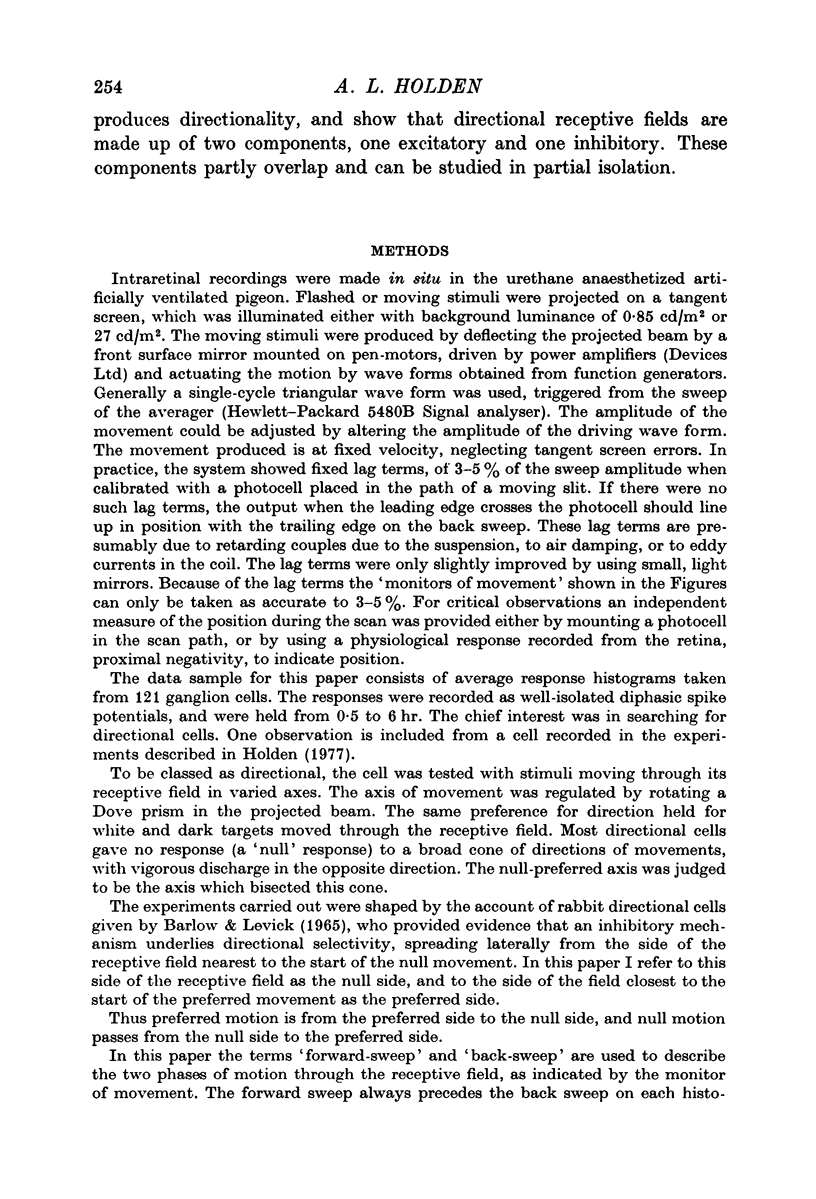
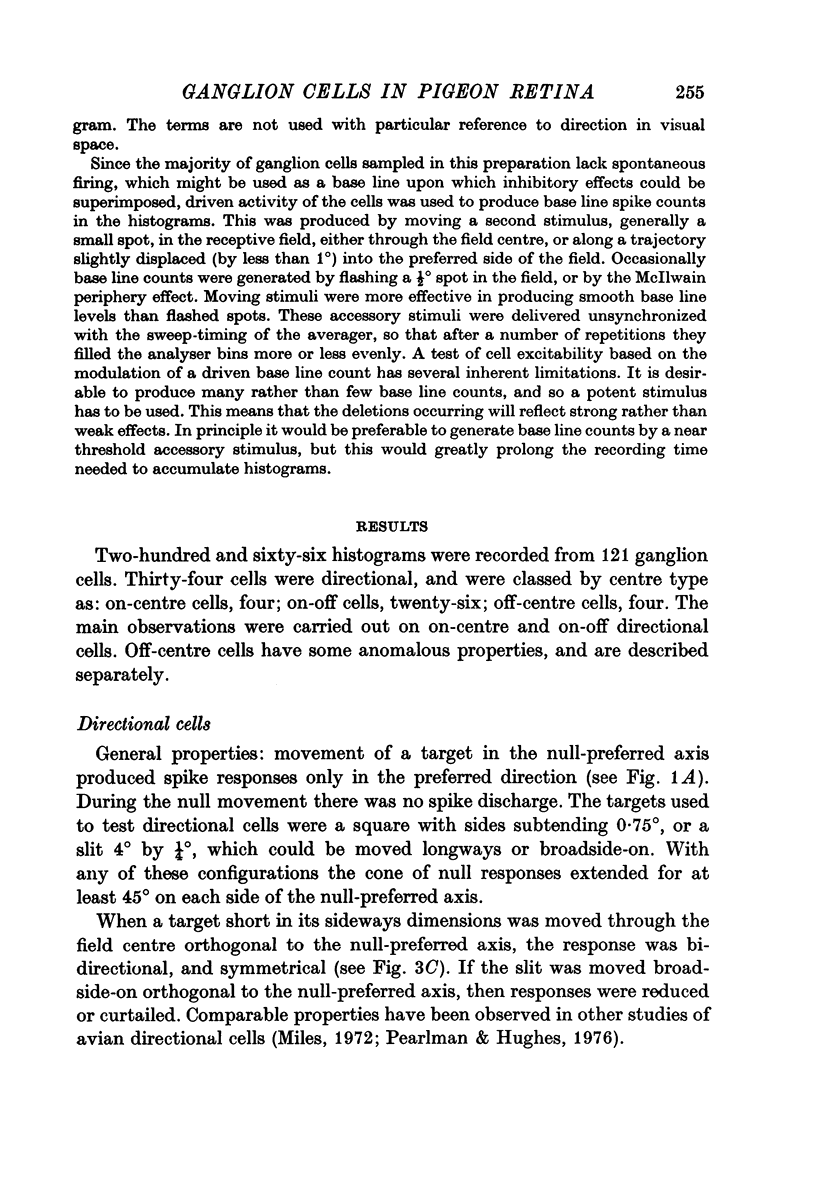
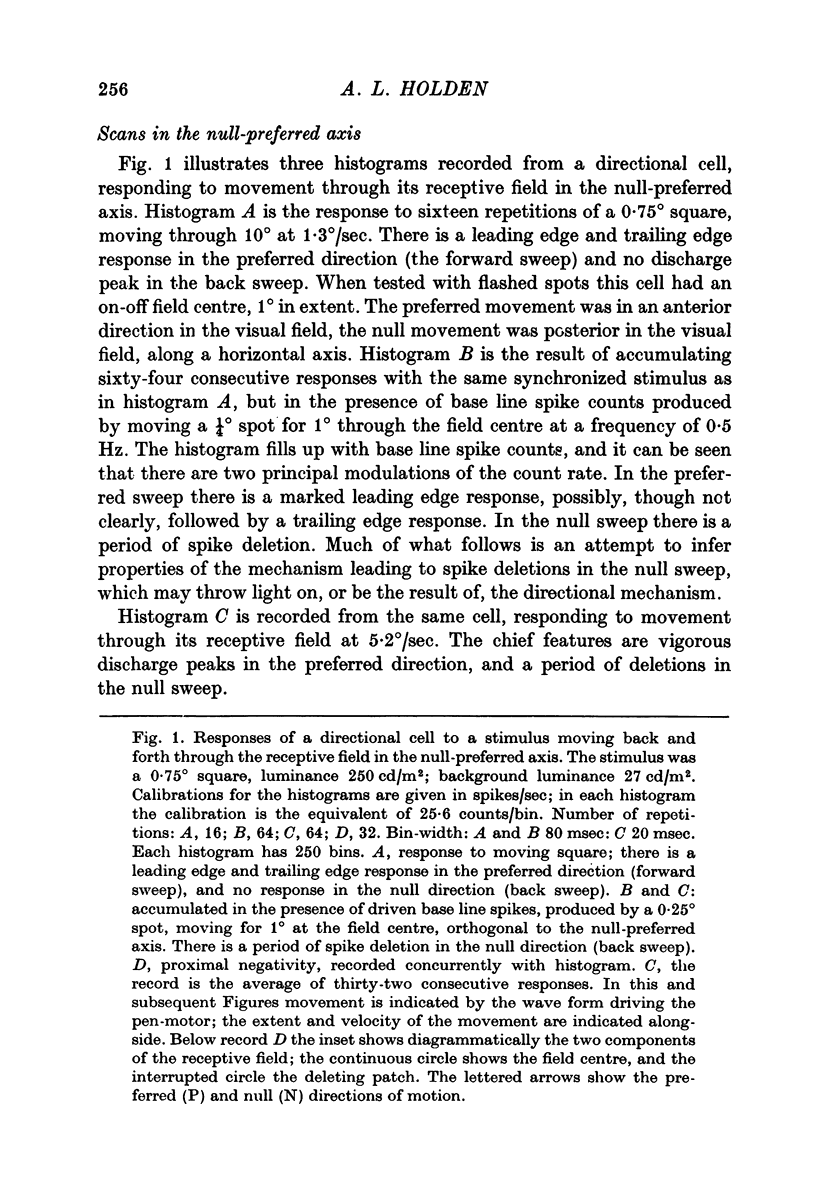
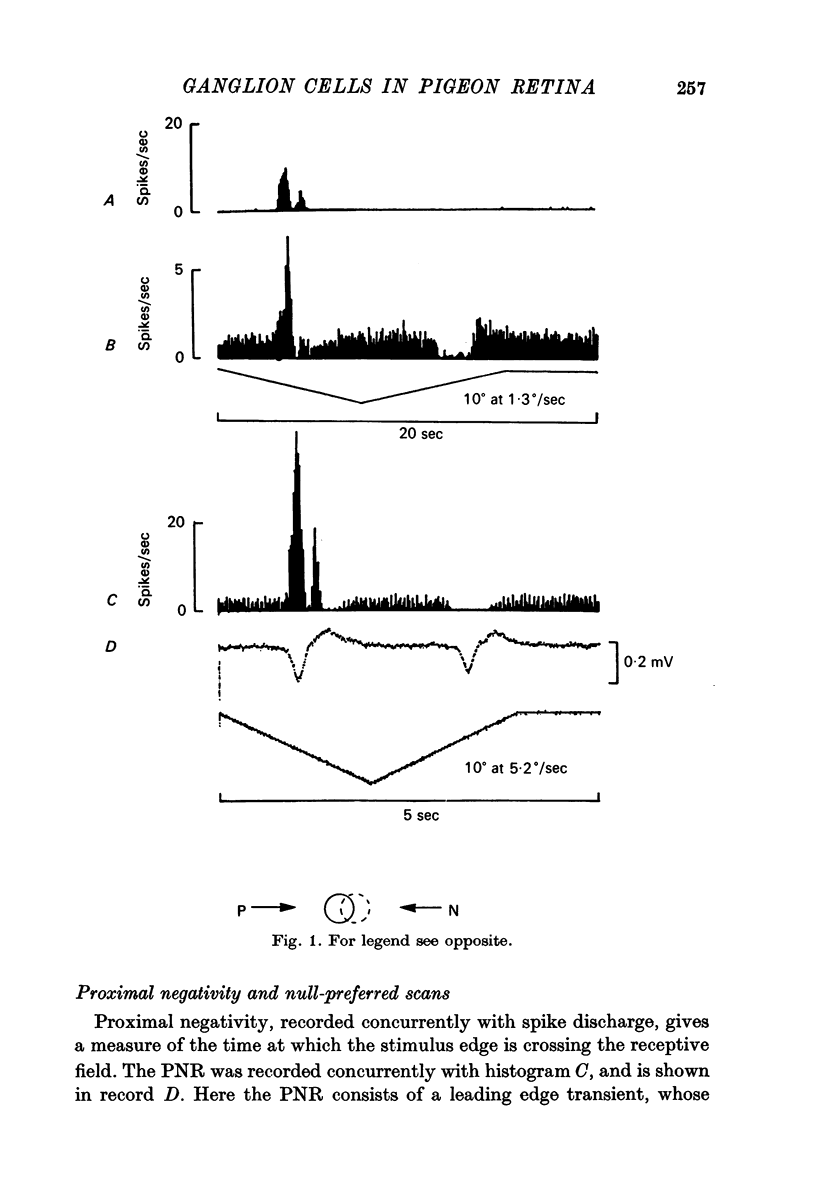
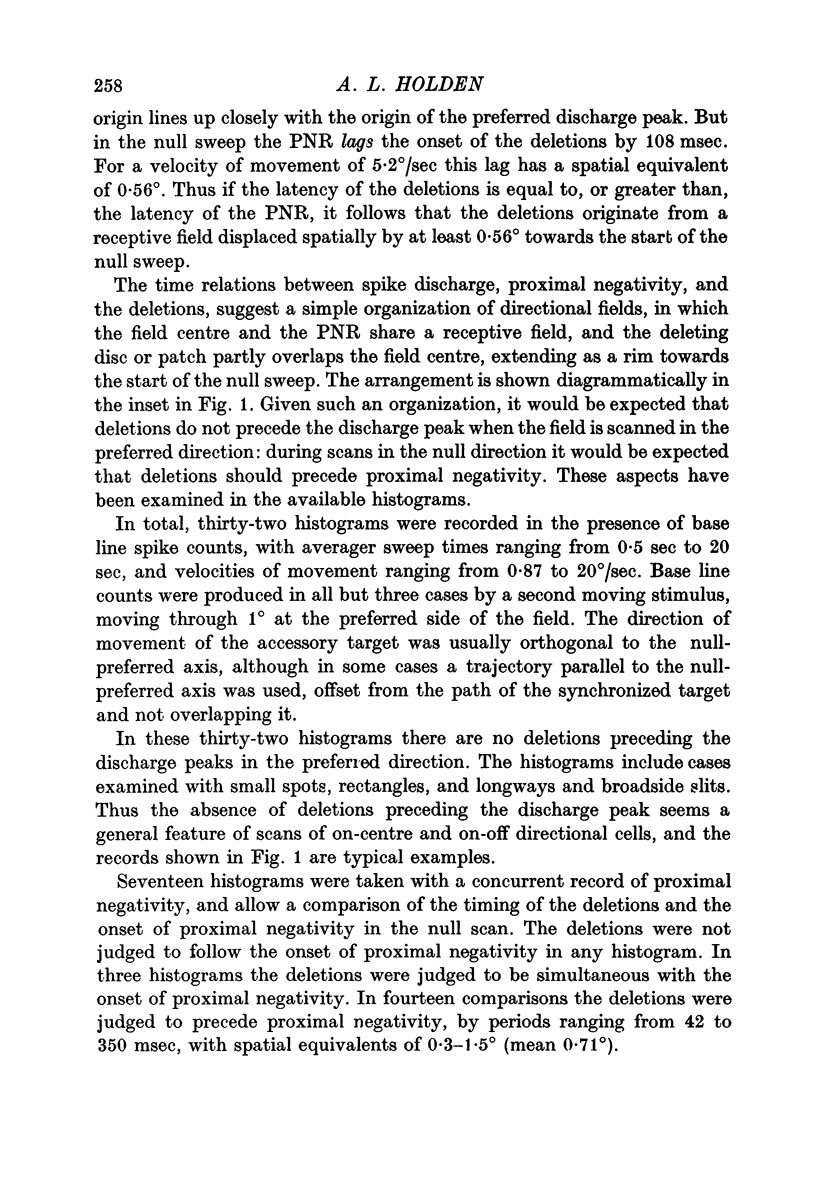
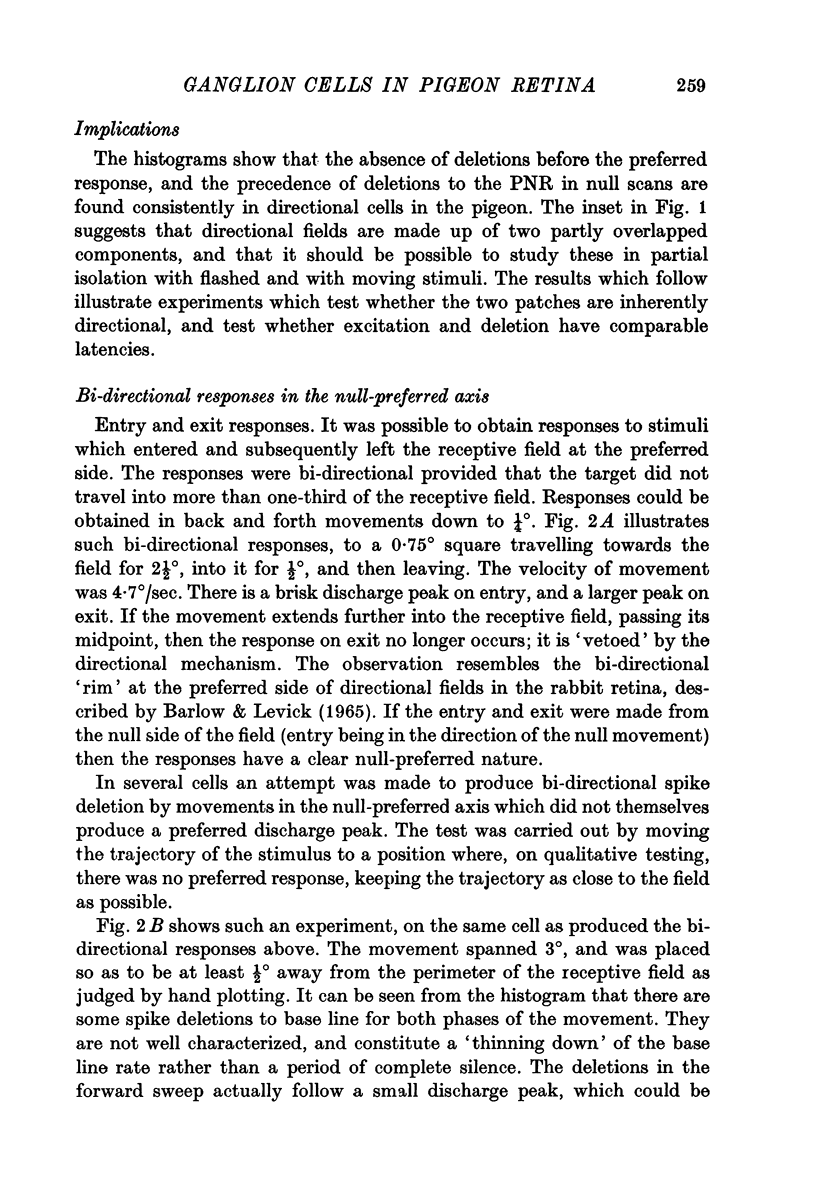

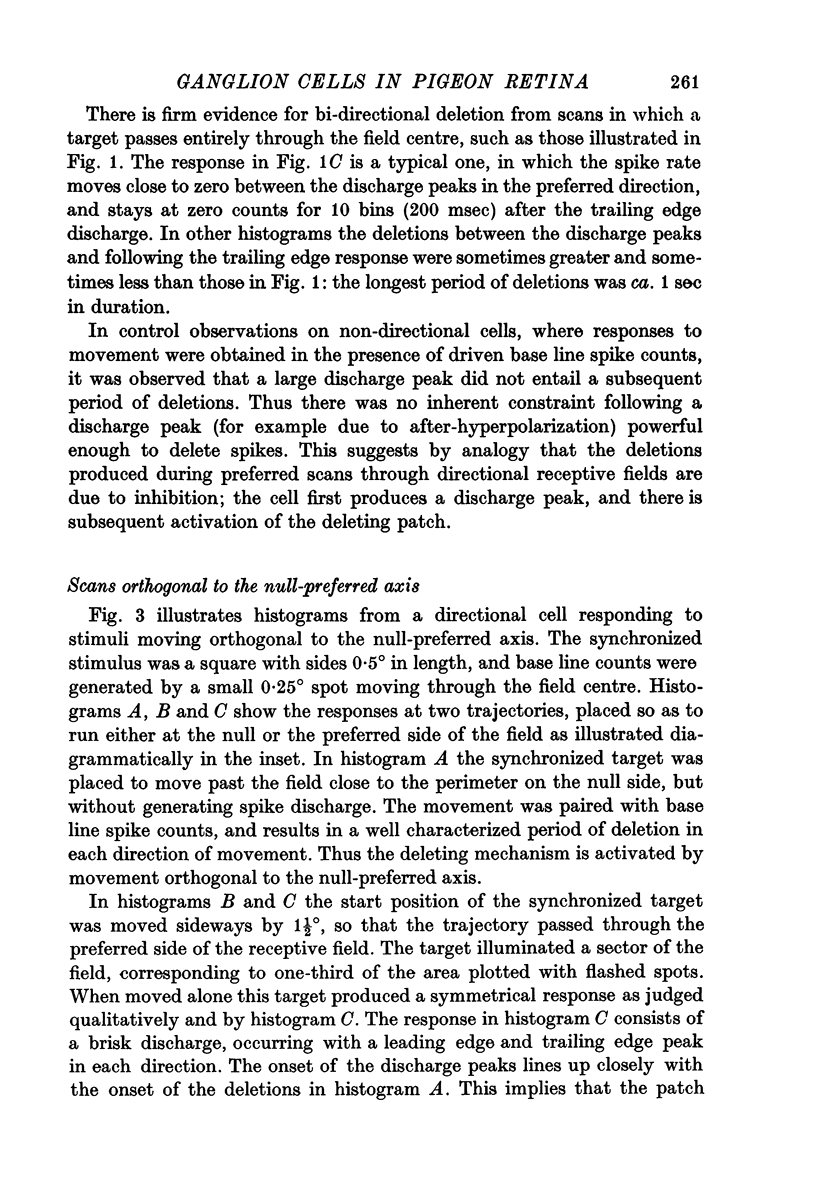
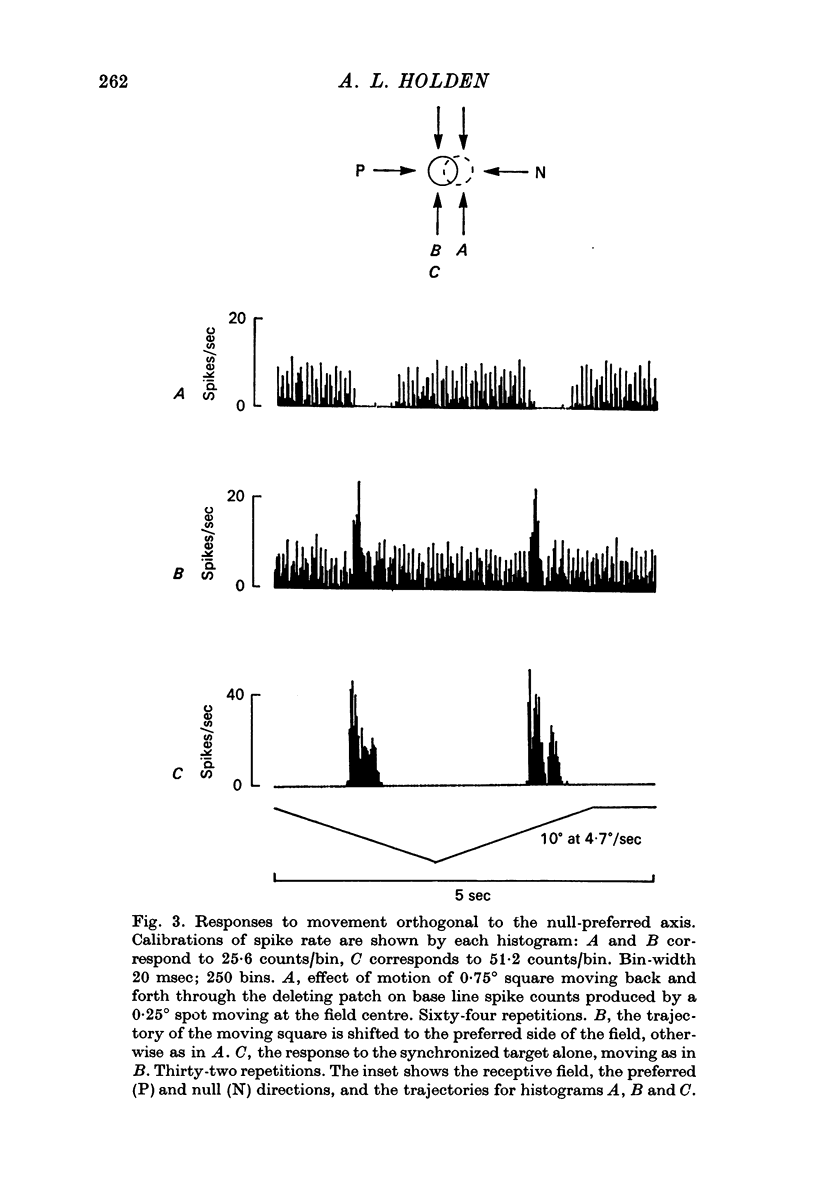
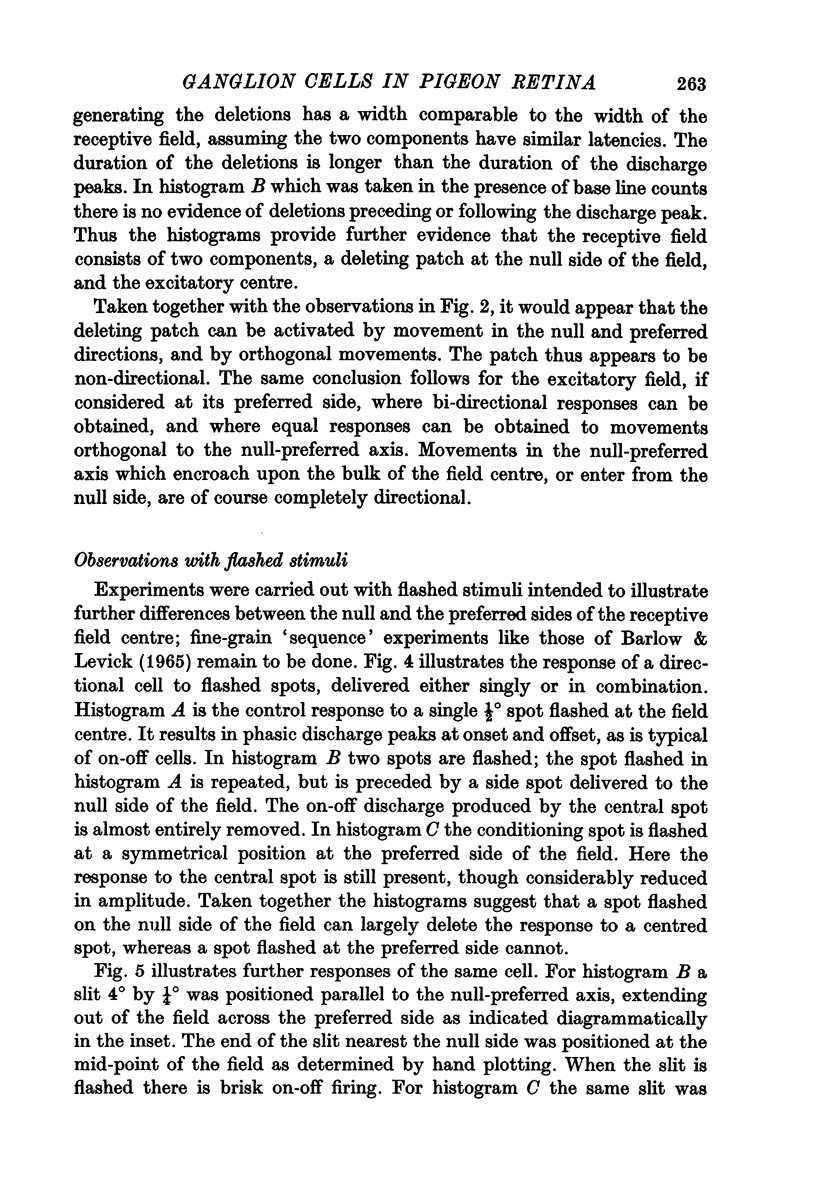
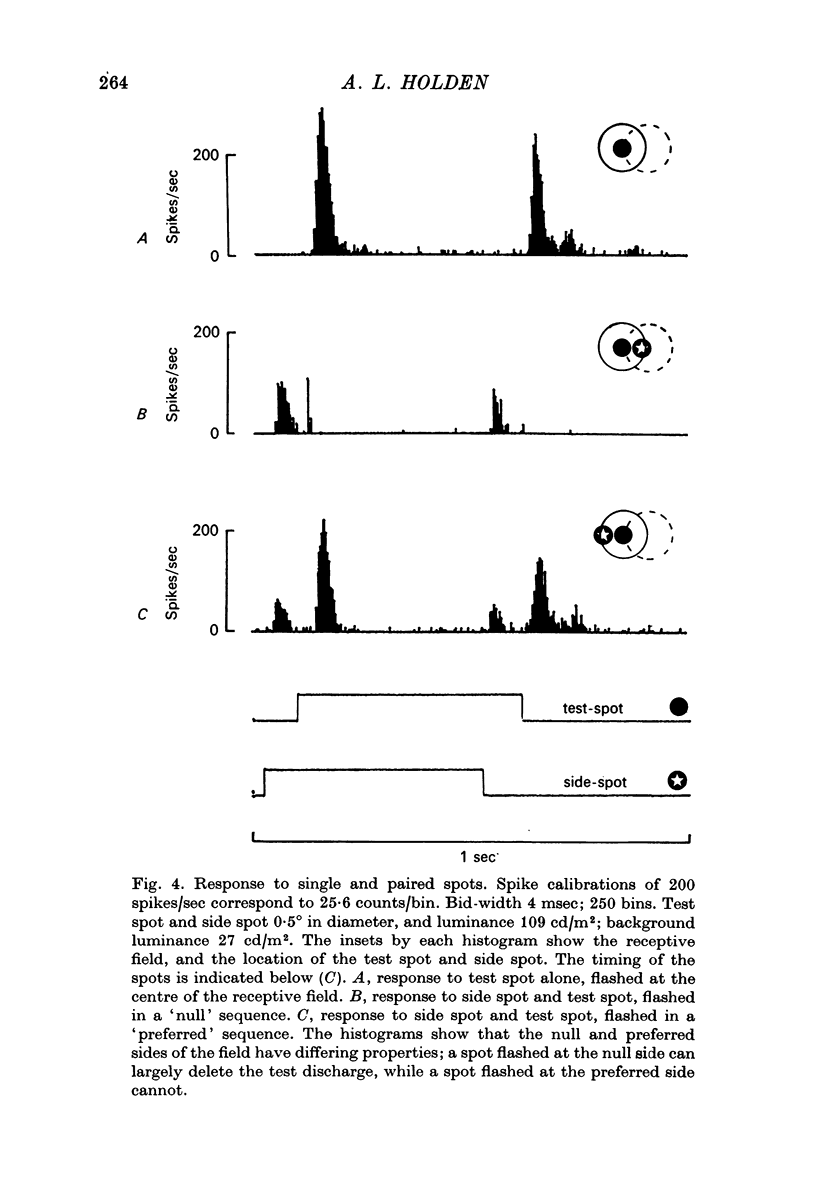
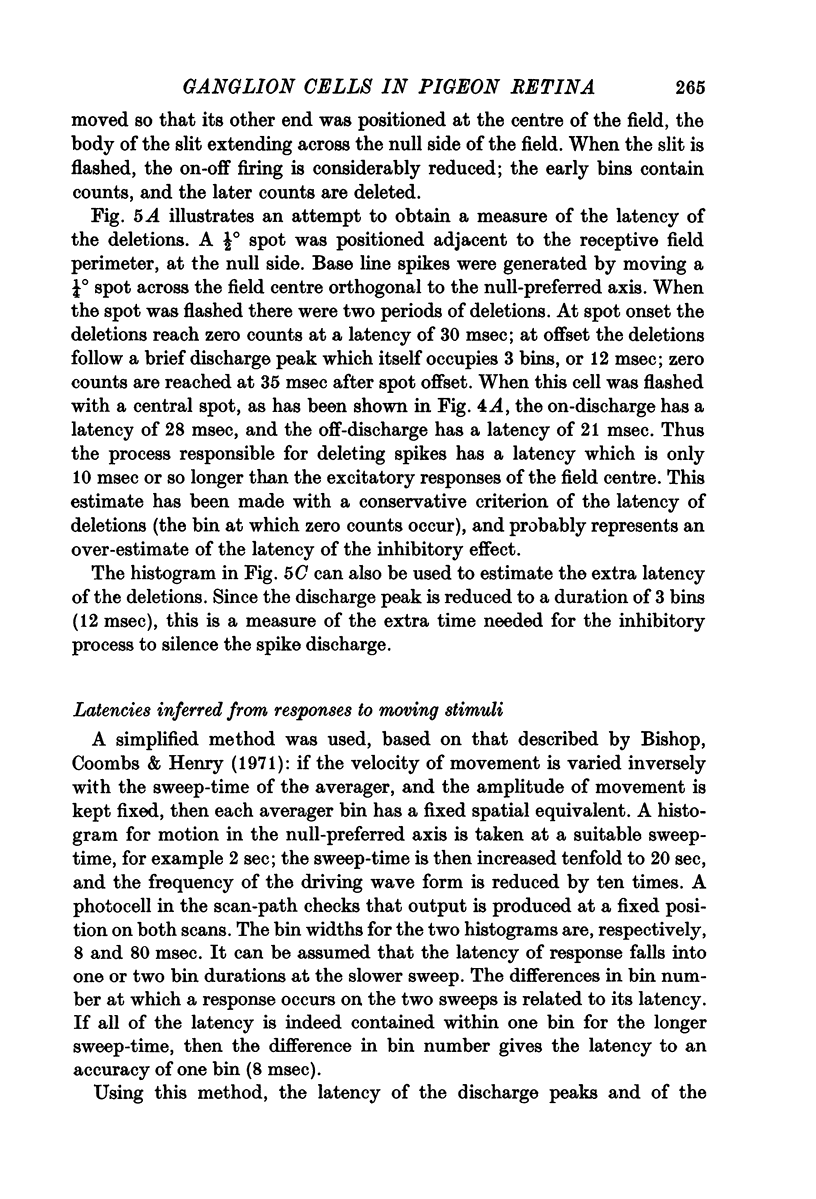

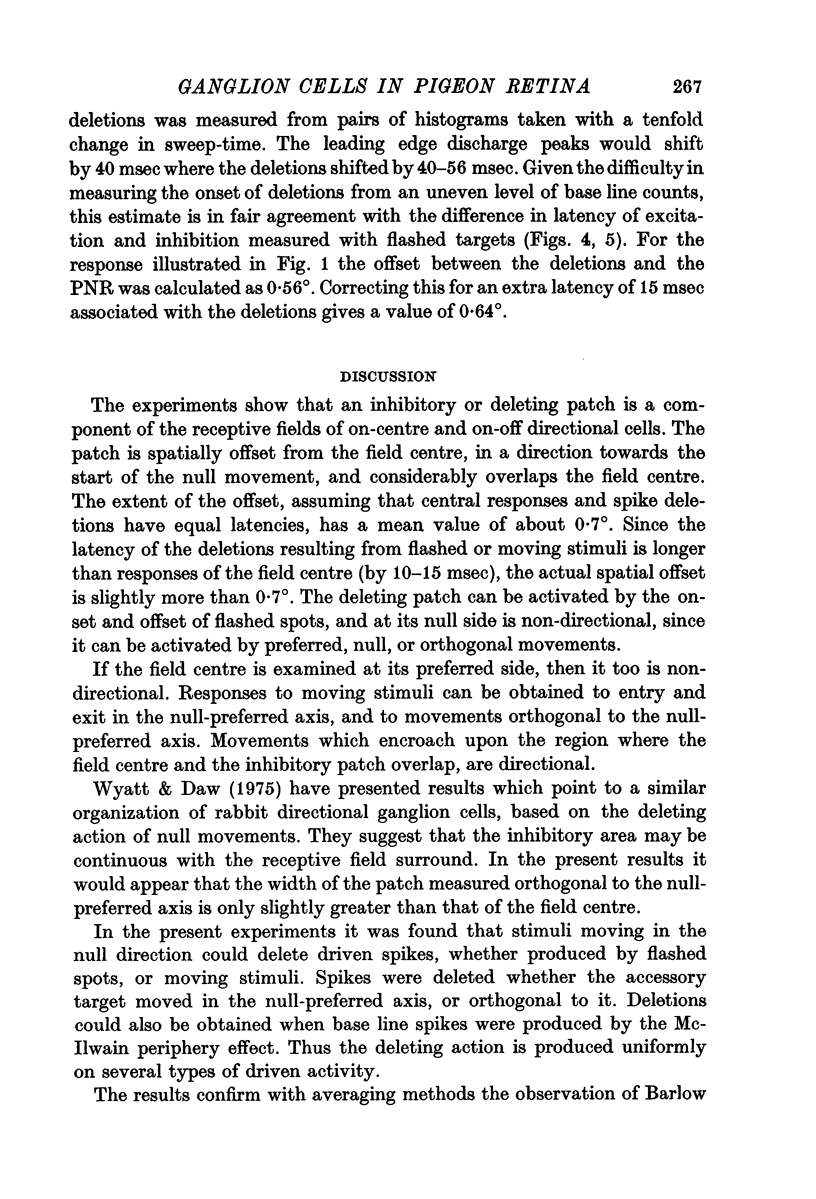
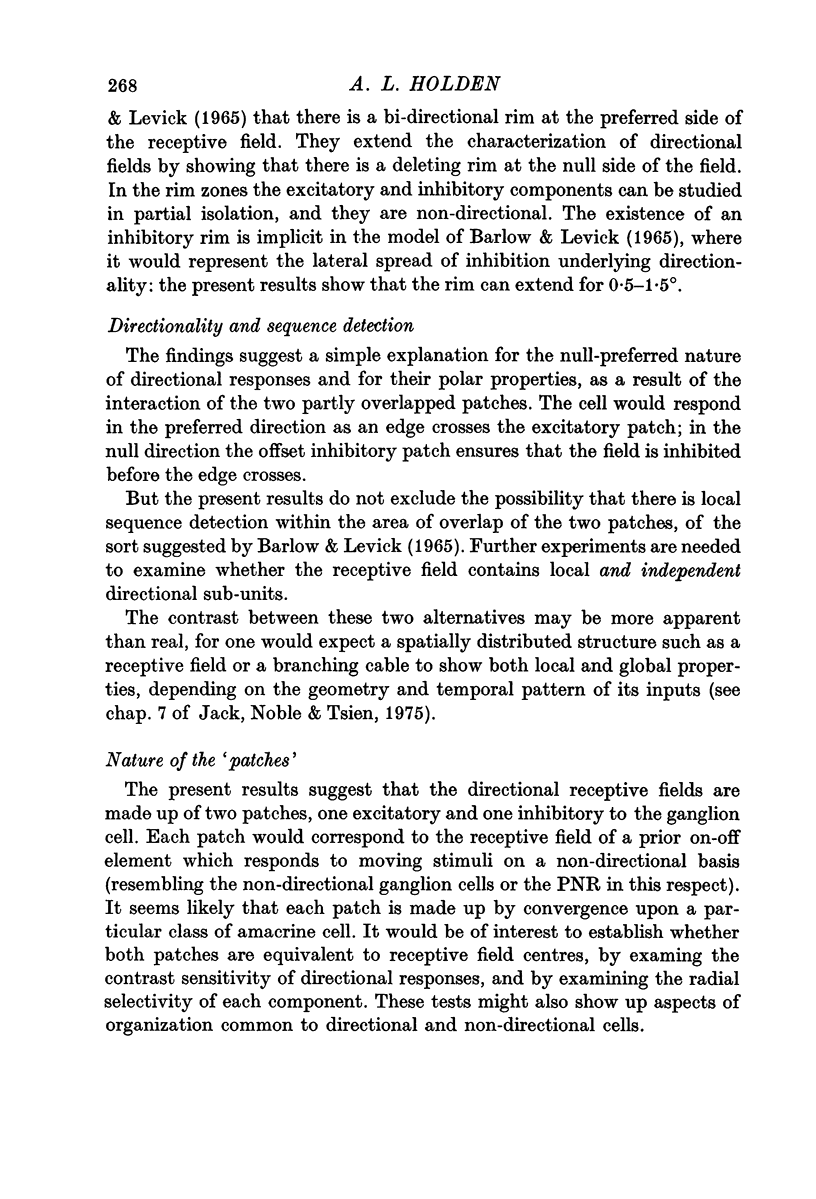
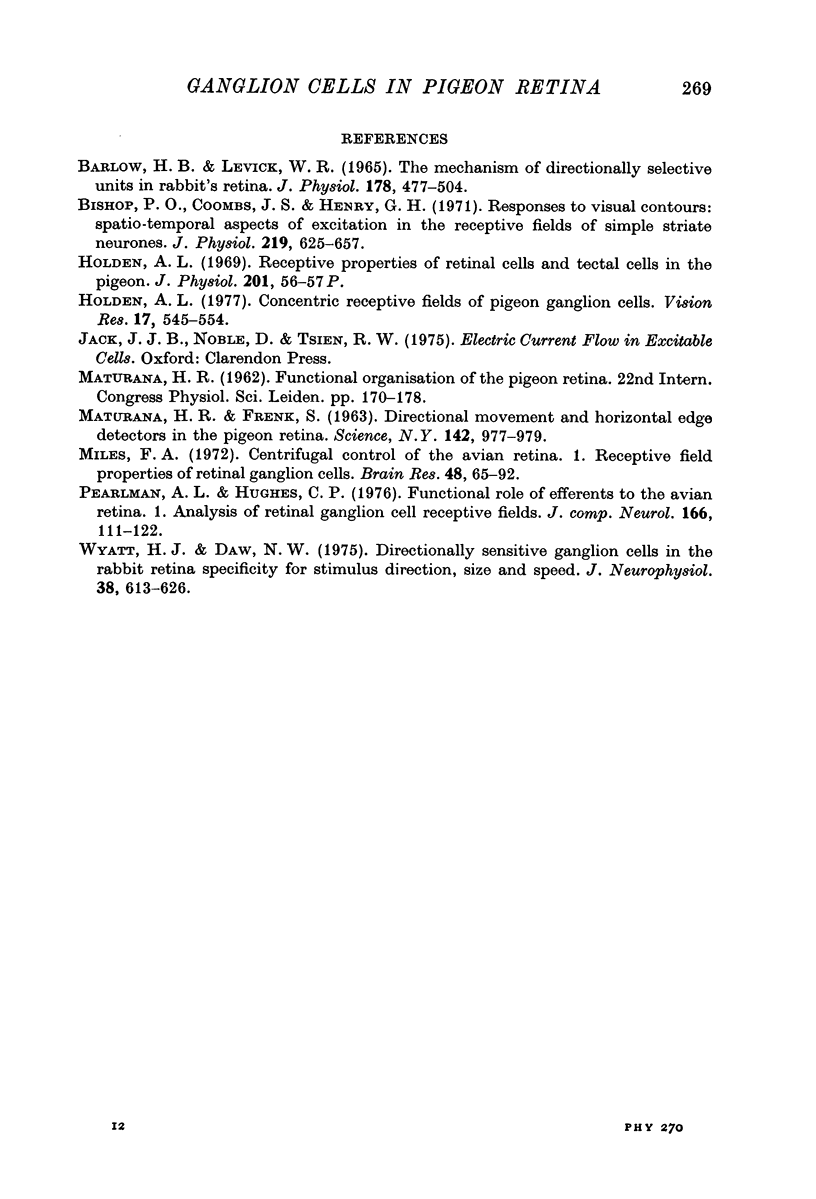
Selected References
These references are in PubMed. This may not be the complete list of references from this article.
- Barlow H. B., Levick W. R. The mechanism of directionally selective units in rabbit's retina. J Physiol. 1965 Jun;178(3):477–504. doi: 10.1113/jphysiol.1965.sp007638. [DOI] [PMC free article] [PubMed] [Google Scholar]
- Bishop P. O., Coombs J. S., Henry G. H. Responses to visual contours: spatio-temporal aspects of excitation in the receptive fields of simple striate neurones. J Physiol. 1971 Dec;219(3):625–657. doi: 10.1113/jphysiol.1971.sp009681. [DOI] [PMC free article] [PubMed] [Google Scholar]
- Holden A. L. Concentric receptive fields of pigeon ganglion cells. Vision Res. 1977;17(4):545–554. doi: 10.1016/0042-6989(77)90053-0. [DOI] [PubMed] [Google Scholar]
- Holden A. L. Receptive properties of retinal cells and tectal cells in the pigeon. J Physiol. 1969 Apr;201(2):56P–57P. [PubMed] [Google Scholar]
- MATURANA H. R., FRENK S. DIRECTIONAL MOVEMENT AND HORIZONTAL EDGE DETECTORS IN THE PIGEON RETINA. Science. 1963 Nov 15;142(3594):977–979. doi: 10.1126/science.142.3594.977. [DOI] [PubMed] [Google Scholar]
- Miles F. A. Centrifugal control of the avian retina. I. Receptive field properties of retinal ganglion cells. Brain Res. 1972 Dec 24;48:65–92. doi: 10.1016/0006-8993(72)90171-0. [DOI] [PubMed] [Google Scholar]
- Pearlman A. L., Hughes C. P. Functional role of efferents to the avian retina. I. Analysis of retinal ganglion cell receptive fields. J Comp Neurol. 1976 Mar 1;166(1):111–122. doi: 10.1002/cne.901660108. [DOI] [PubMed] [Google Scholar]
- Wyatt H. J., Daw N. W. Directionally sensitive ganglion cells in the rabbit retina: specificity for stimulus direction, size, and speed. J Neurophysiol. 1975 May;38(3):613–626. doi: 10.1152/jn.1975.38.3.613. [DOI] [PubMed] [Google Scholar]


